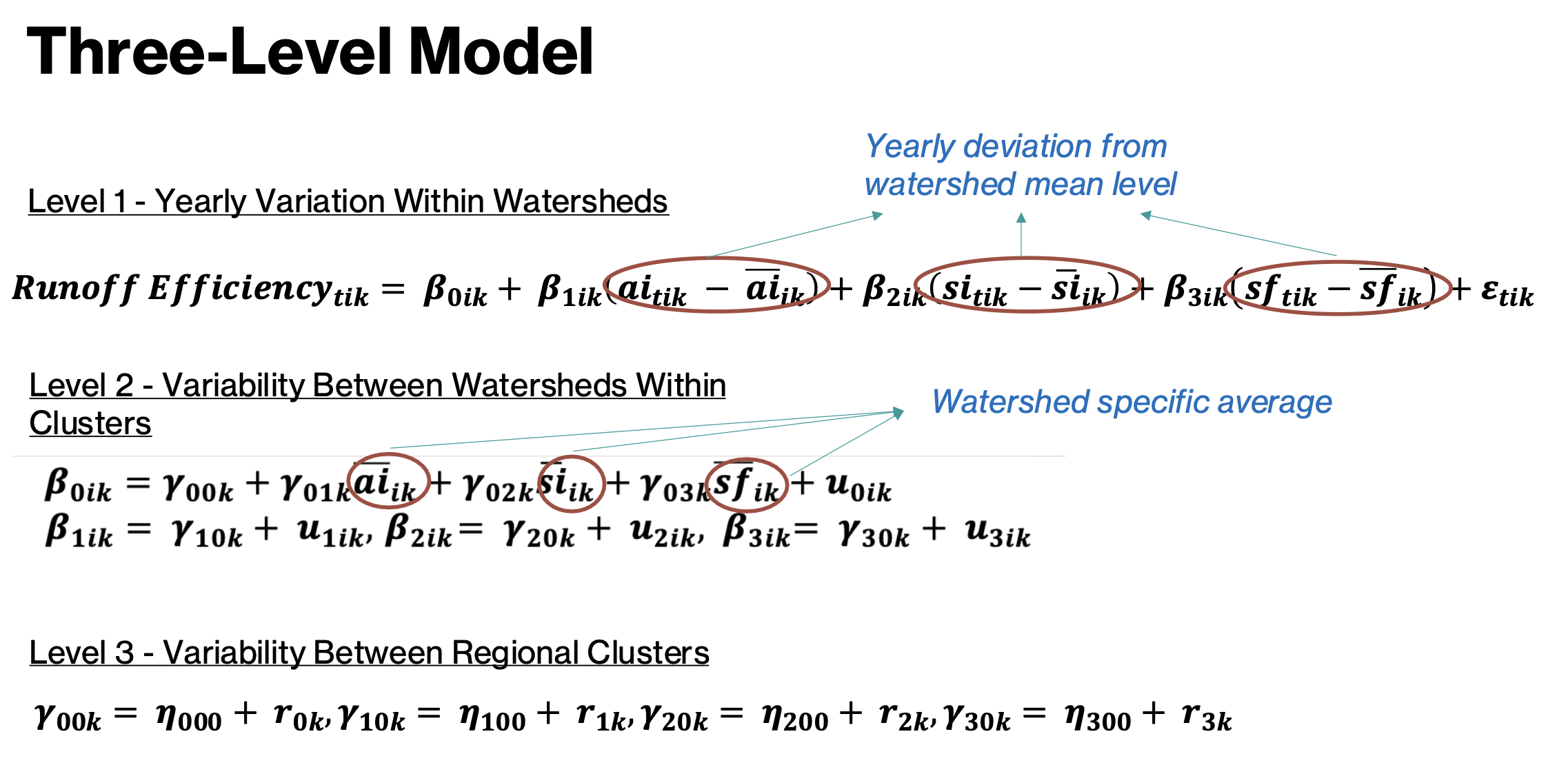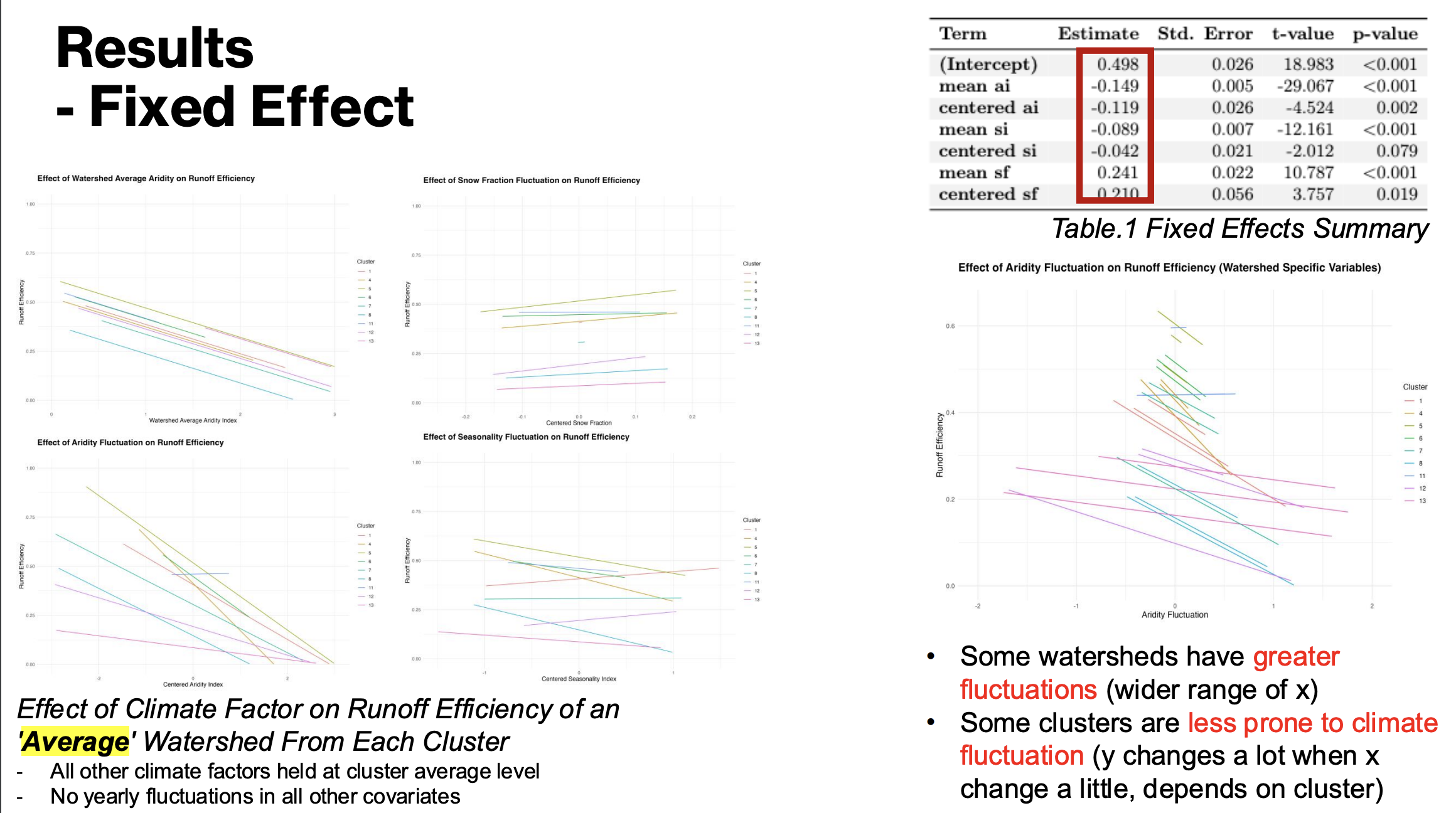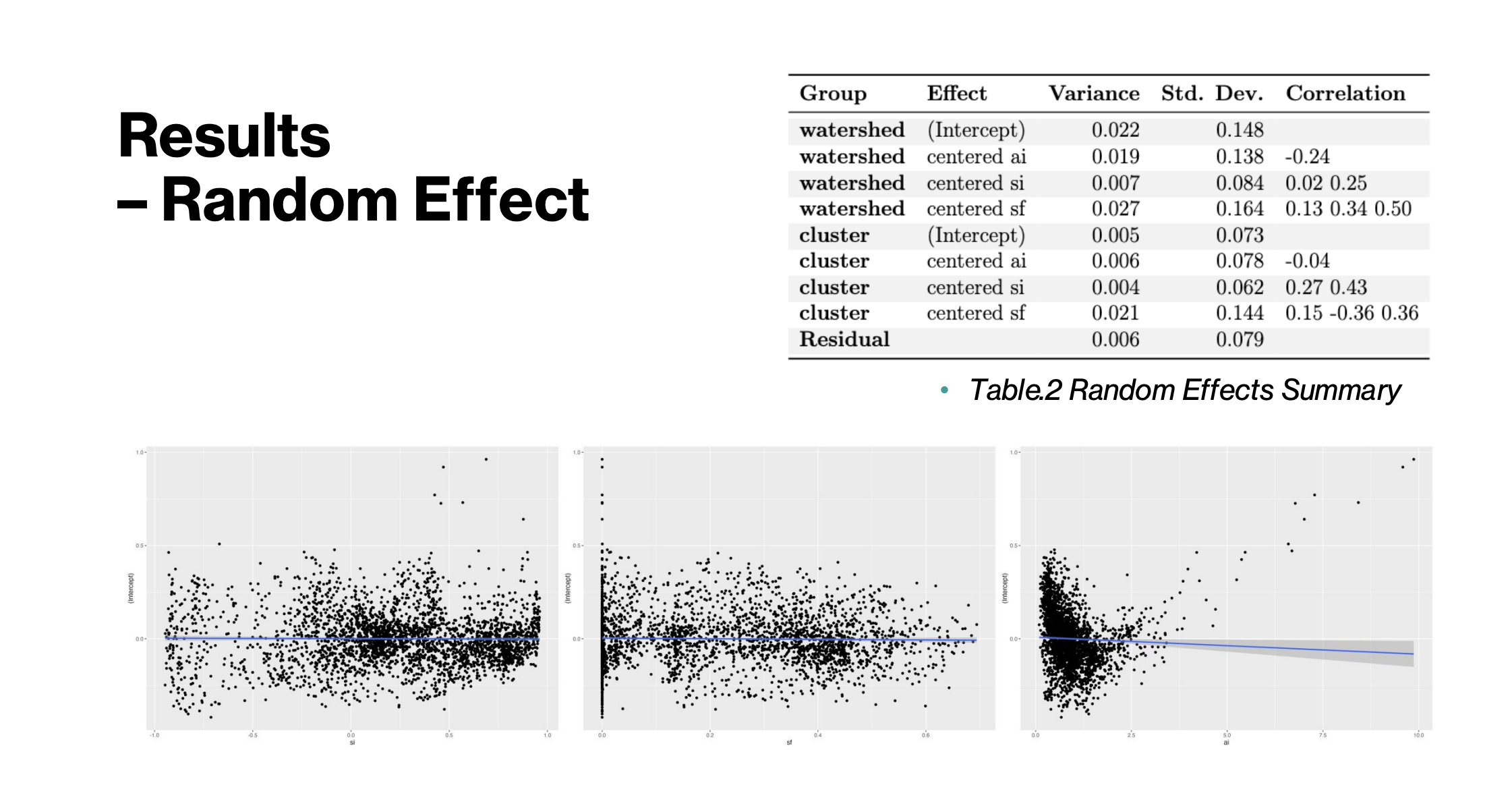Runoff Efficiency in a Changing Climate: A Multilevel Approach
A multilevel model exploring the relationships between climatic indices and runoff efficiency across watersheds and clusters.

Project Overview
This project explores the dynamics of runoff efficiency—the ratio of streamflow to precipitation—across 3,022 watersheds worldwide. By developing a three-level multilevel model, we analyze the effects of climatic covariates such as Aridity Index (AI), Seasonality Index (SI), and Snow Fraction (SF) on runoff efficiency.
Our findings underscore the complex interplay between climate, hydrology, and geography, highlighting the role of snow-dominated systems in sustaining water resources amid climatic variability.
Methodology
- Data Sources:
- Streamflow and precipitation data from global gauge records.
- Climatic indices derived from global datasets.
- BIOME-based clustering to group watersheds by climate and physical characteristics.
- Three-Level Hierarchical Model:
- Level 1: Year-to-year variability within watersheds, driven by temporal climate fluctuations.
- Level 2: Variability between watersheds, influenced by geographic and hydrological factors.
- Level 3: Regional differences across BIOME-based clusters, reflecting ecological and climatic characteristics.
- Model Specification:
- Fixed effects for climatic averages and deviations.
- Random effects to capture unobserved variability at watershed and cluster levels.

Key Findings
- Climatic Covariates:
- Higher aridity and seasonality indices reduce runoff efficiency.
- Higher snow fraction enhances runoff efficiency, reflecting its role in delayed water release.
- Variability:
- Watersheds: 50% of runoff efficiency variability attributed to watershed-level differences.
- Clusters: 36% variability attributed to regional cluster characteristics.
- Impact of Yearly Deviations:
- Short-term increases in aridity reduce efficiency, while above-average snowfall years improve efficiency.
Results
Runoff efficiency is significantly influenced by long-term climatic averages and yearly deviations:
- Higher average aridity index (AI) reduces runoff efficiency (-0.149, p<0.001).
- Higher average snow fraction (SF) enhances runoff efficiency (+0.241, p<0.001).
- Higher average seasonality index (SI) reduces runoff efficiency (-0.089, p<0.001).
- Short-term deviations in AI negatively impact runoff efficiency (-0.119, p=0.002).
- Short-term deviations in SF positively influence runoff efficiency (+0.210, p=0.019).

Random Effects Summary
Variance in runoff efficiency is observed at both the watershed and cluster levels:
- Watershed level: Random effects show heterogeneity in baseline efficiency (0.022) and sensitivities to climatic deviations (e.g., SF variance: 0.027).
- Cluster level: Variance in baseline efficiency (0.005) and climatic sensitivities (e.g., SF variance: 0.021) reflects regional influences.
- Correlations among random effects highlight interactions between climatic variables (e.g., SF and AI show moderate correlations within watersheds).

Contributions
- Developed a comprehensive multilevel model to analyze runoff efficiency across temporal and spatial scales.
- Provided actionable insights for water resource management in the context of climate change.
Limitations & Future Work
- Linear Assumptions: Nonlinear or machine learning models could capture more complex relationships.
- Additional Covariates: Land use, soil type, and anthropogenic factors could further refine the analysis.
Acknowledgments
This project is a collaborative effort by Jessica Wang, Qianyi Wang, and Even Li.
Full Report
- Here is the link to our full project report